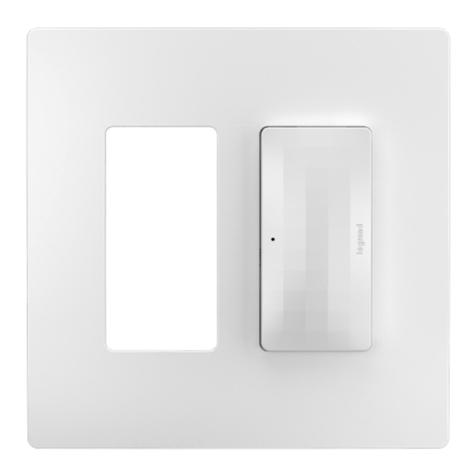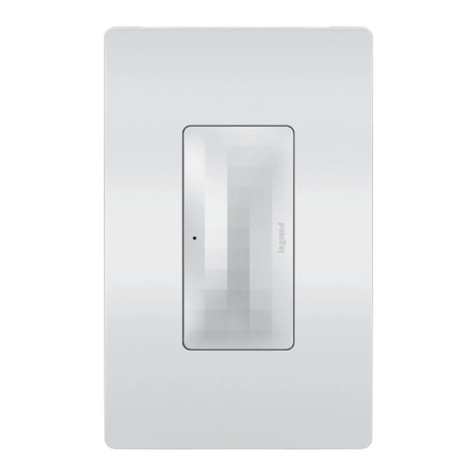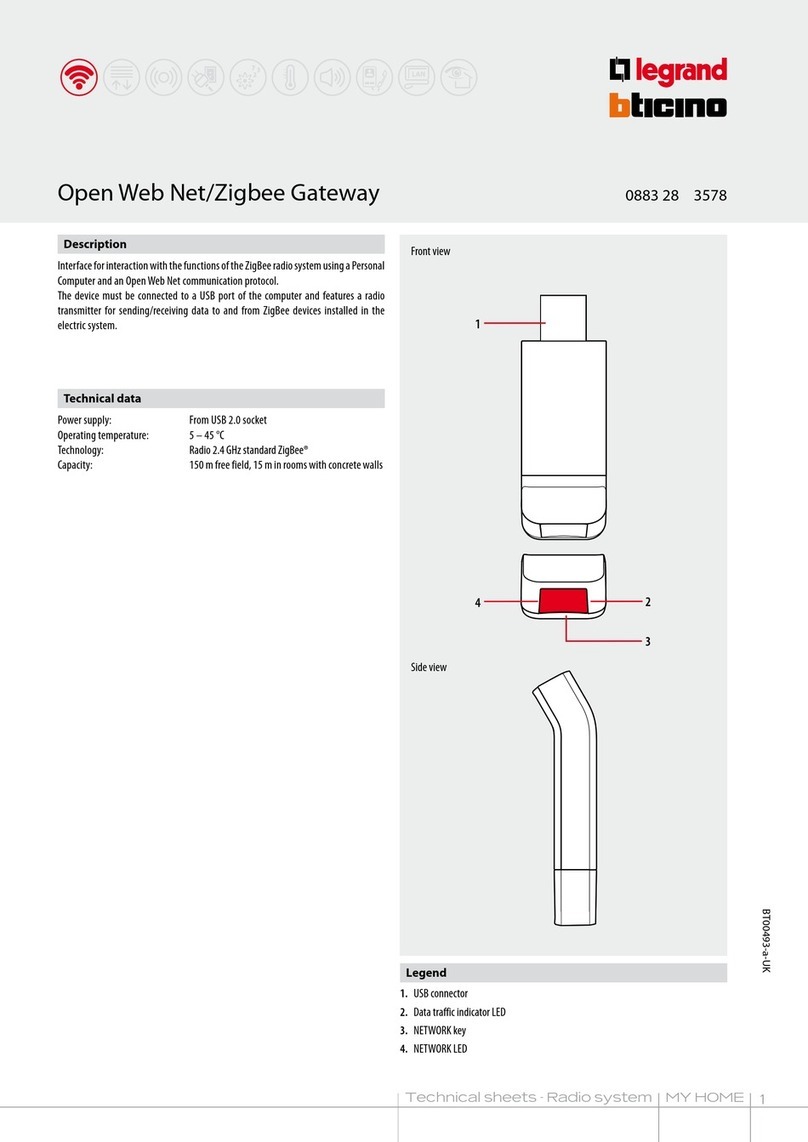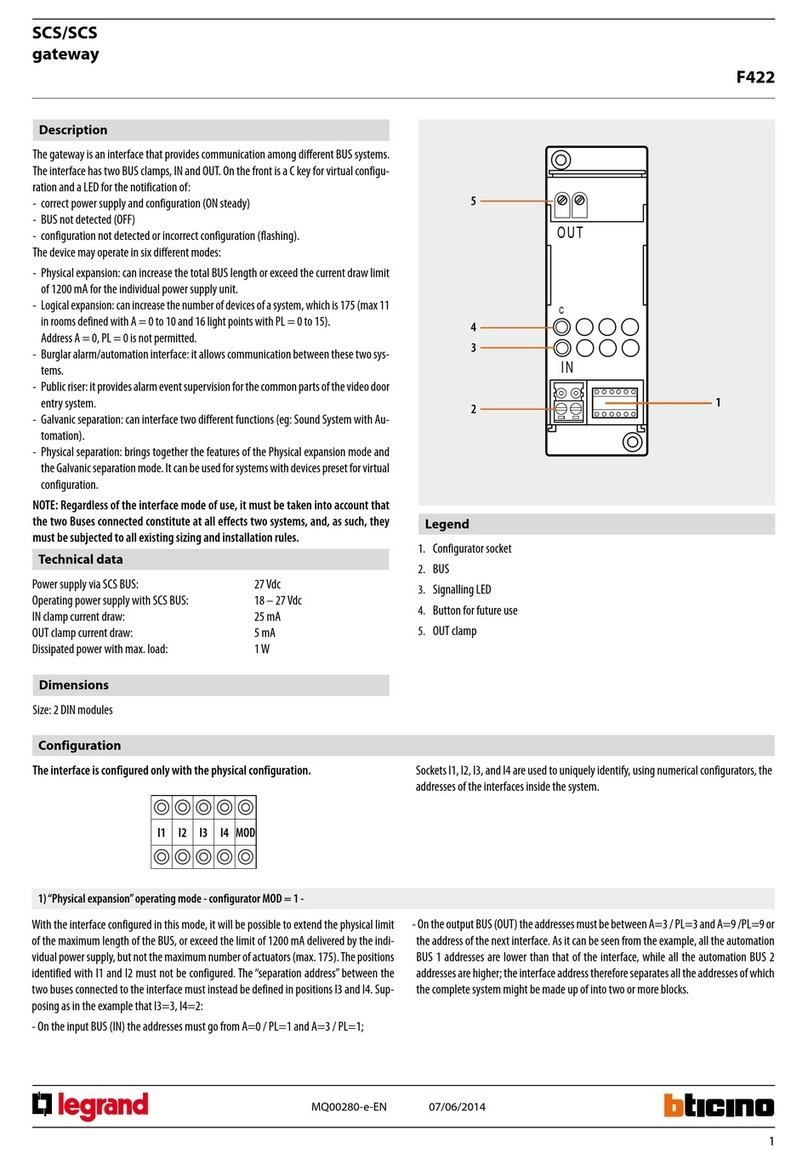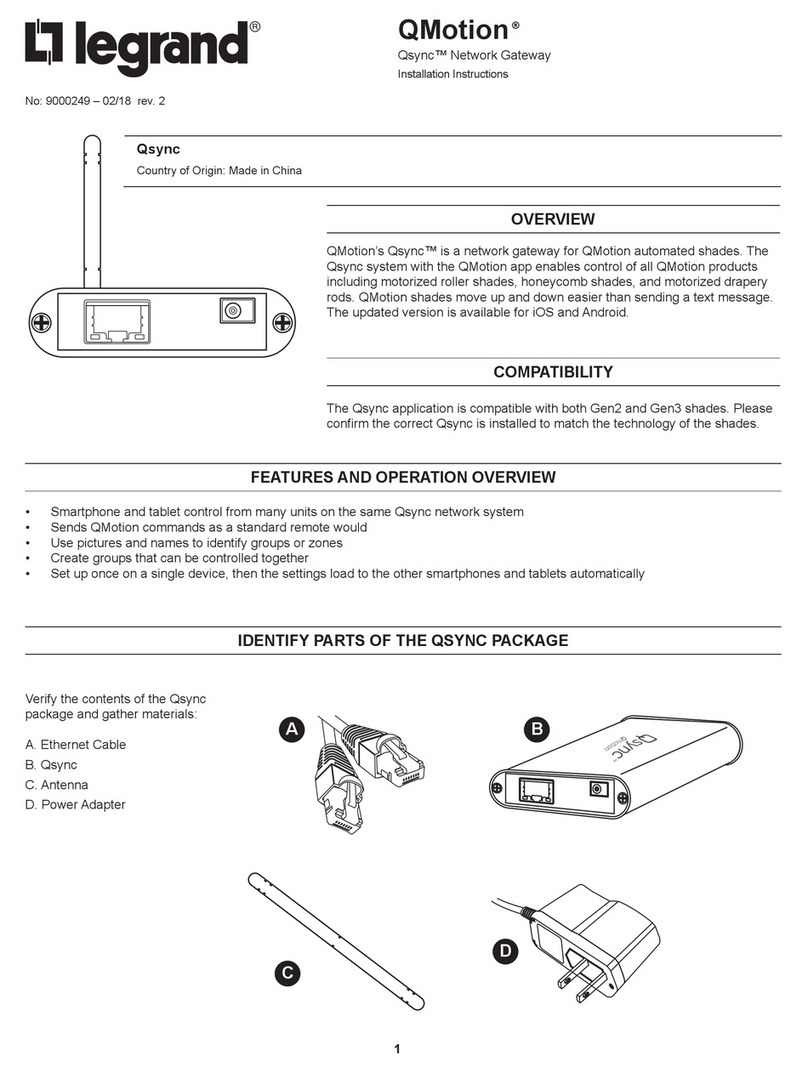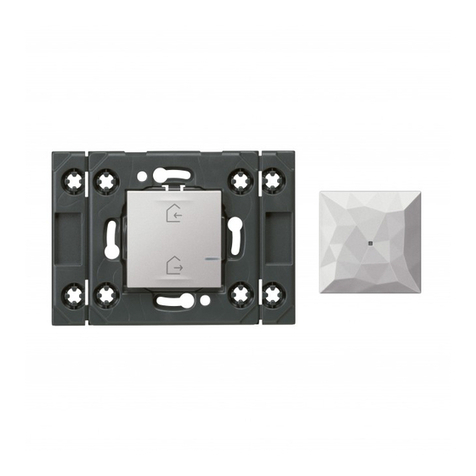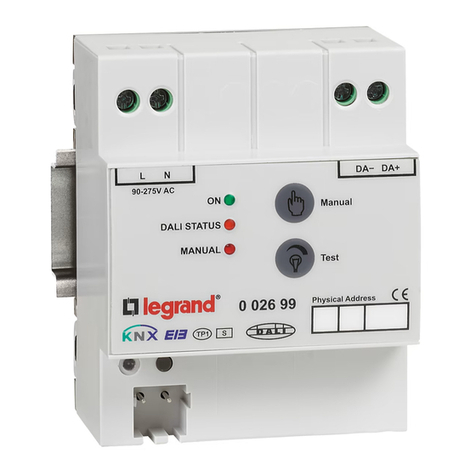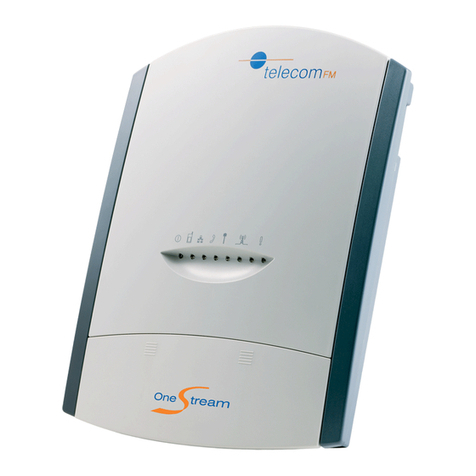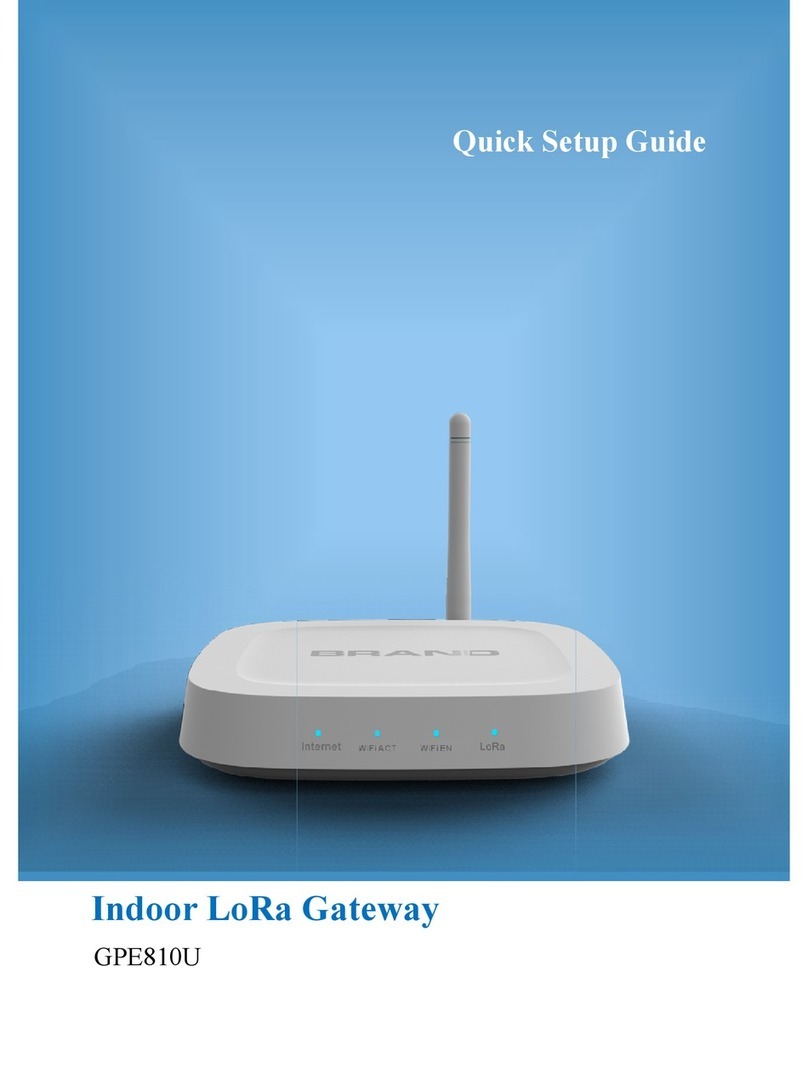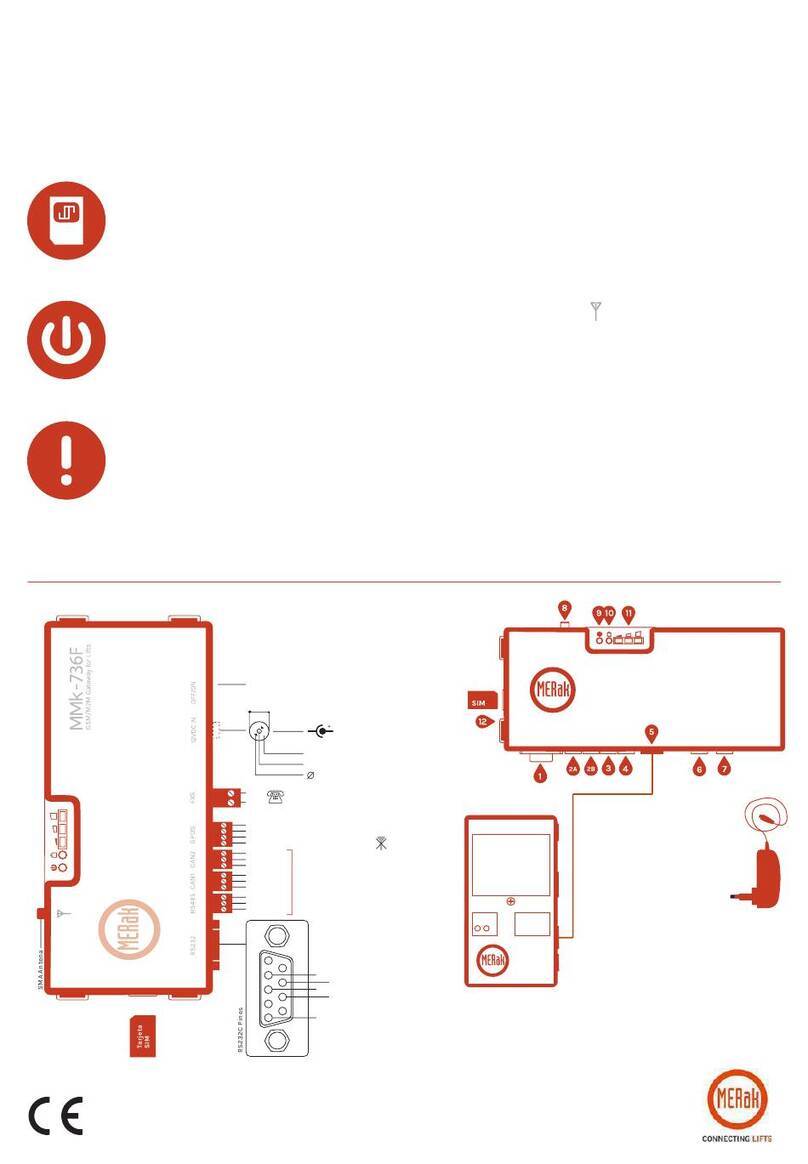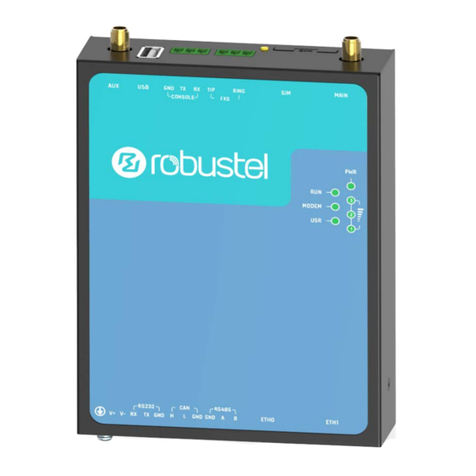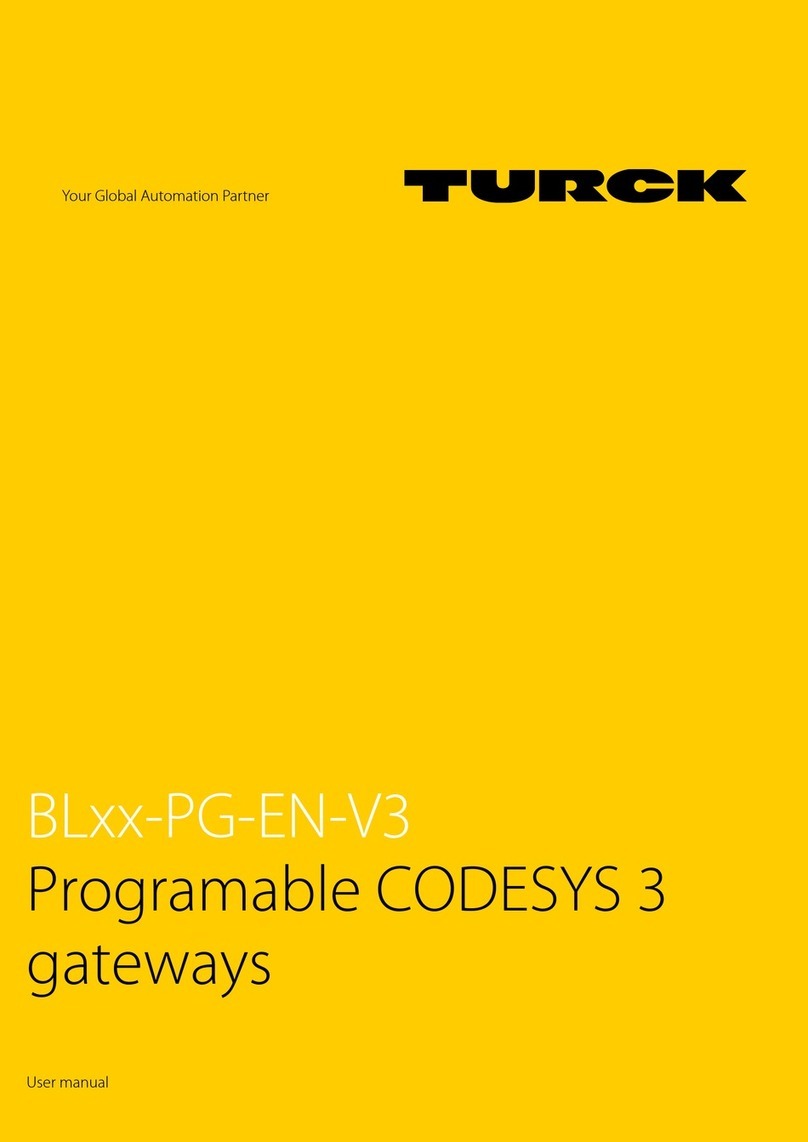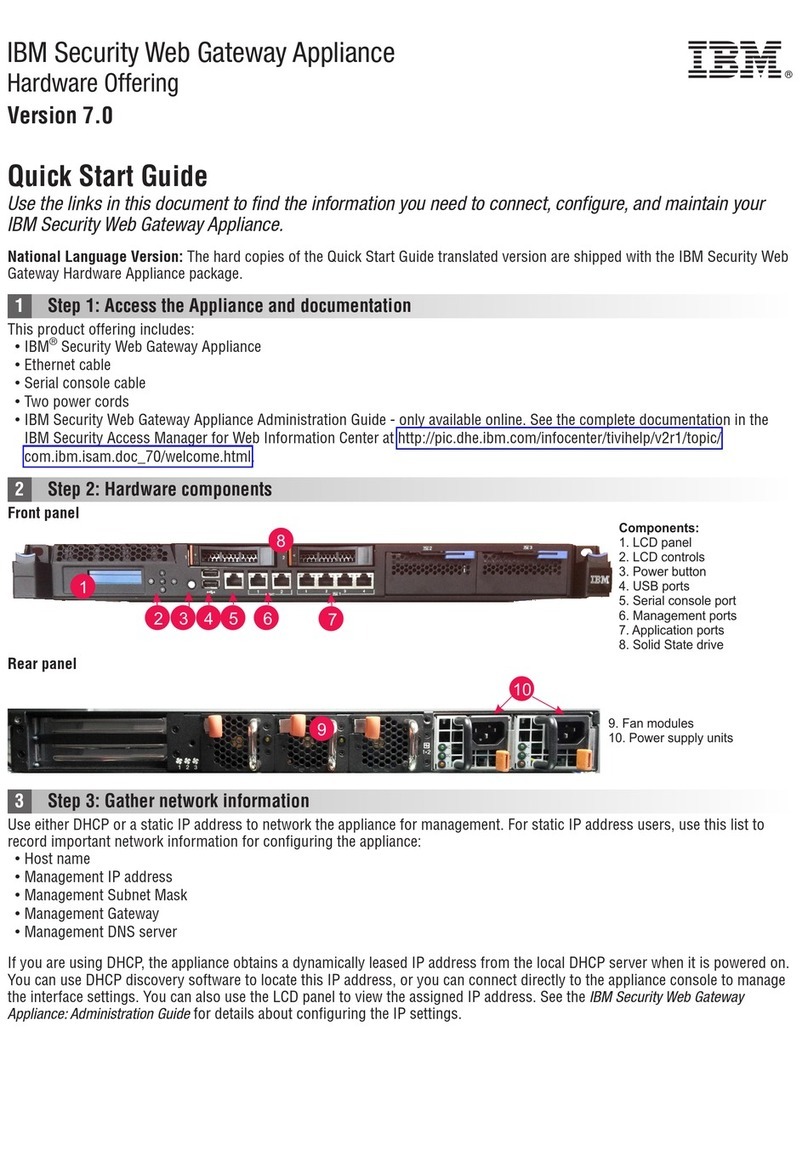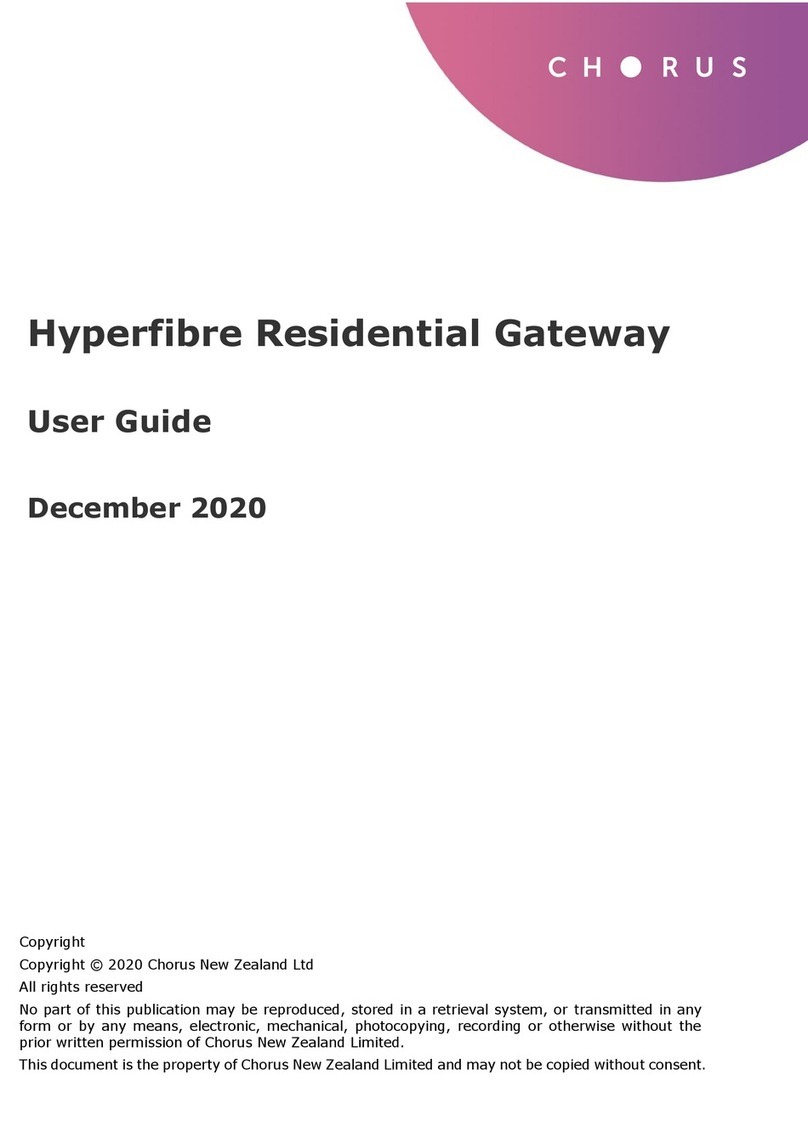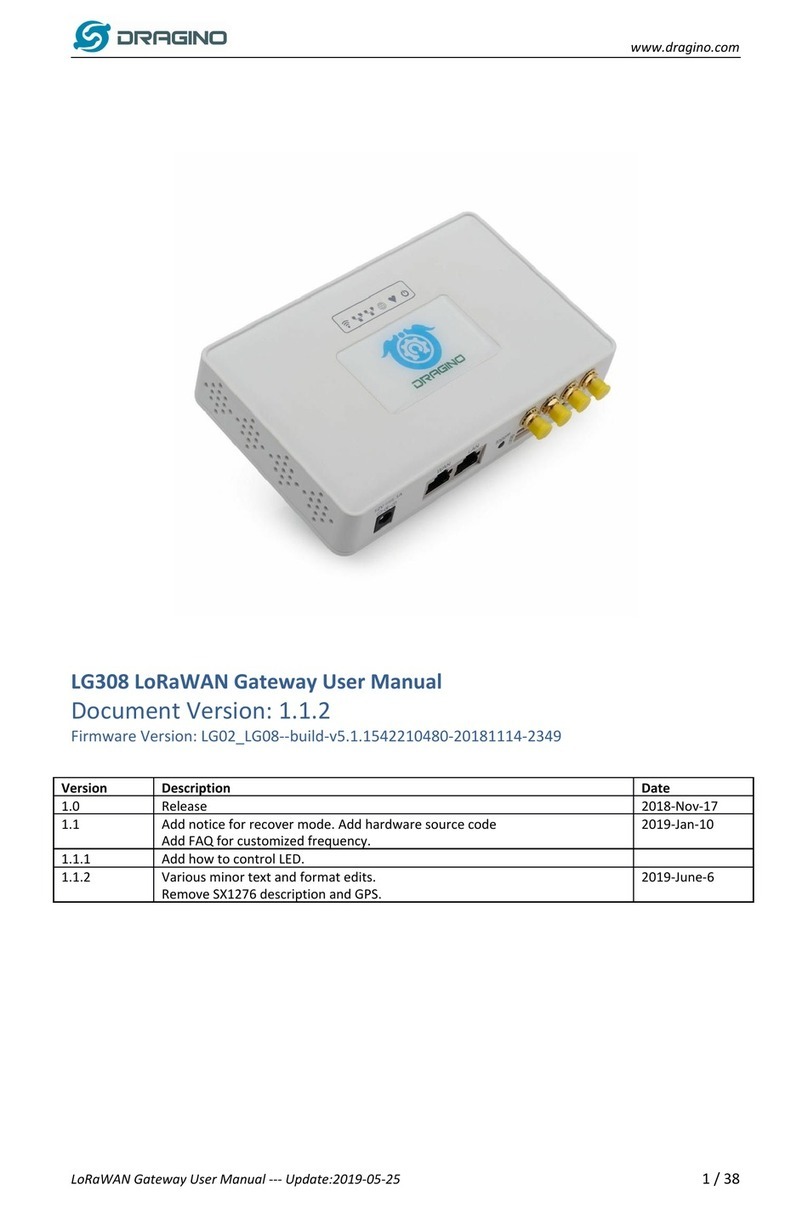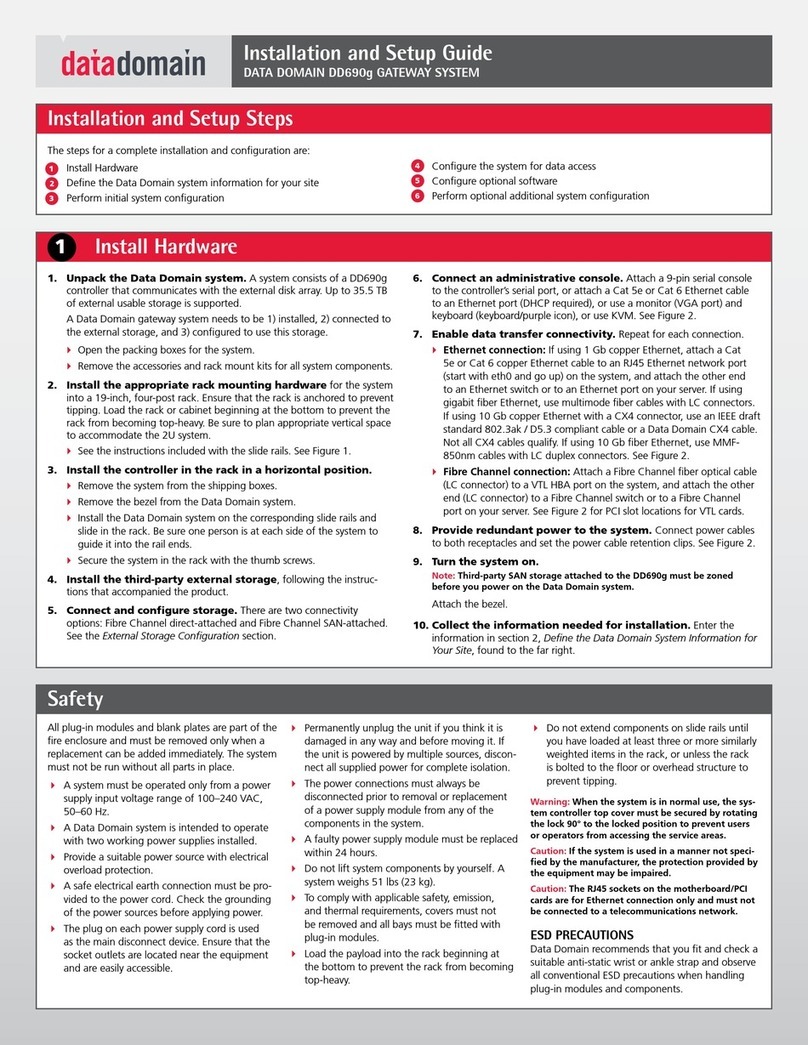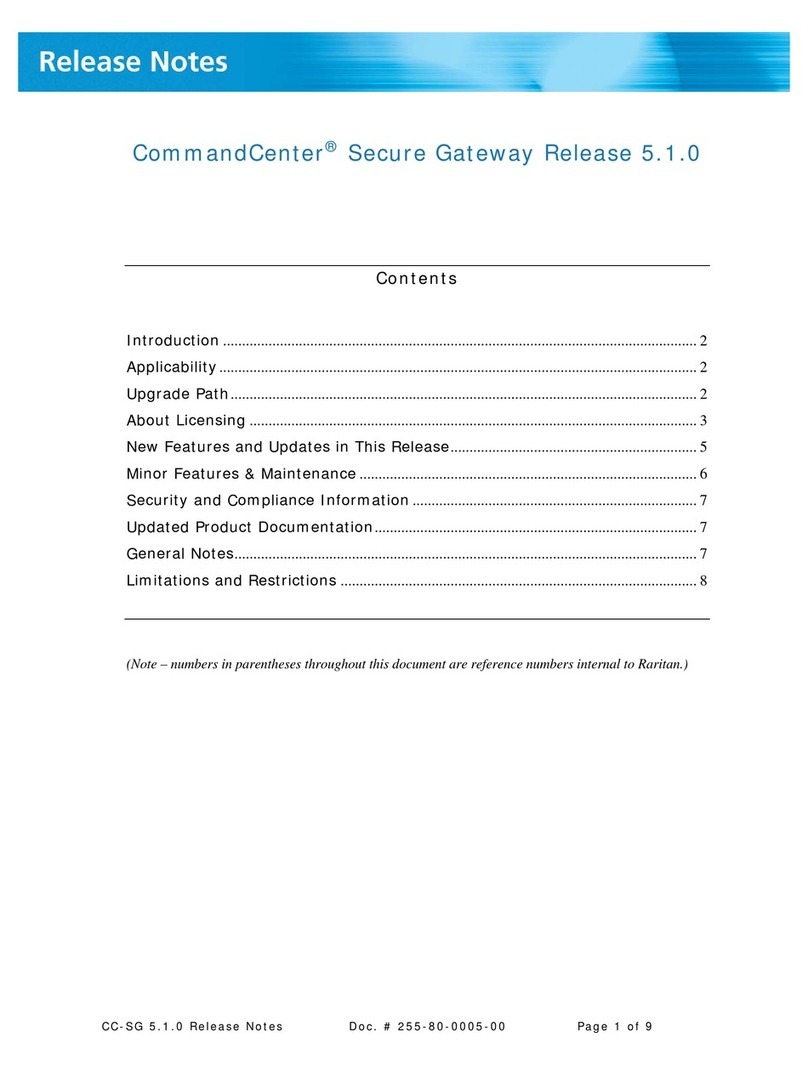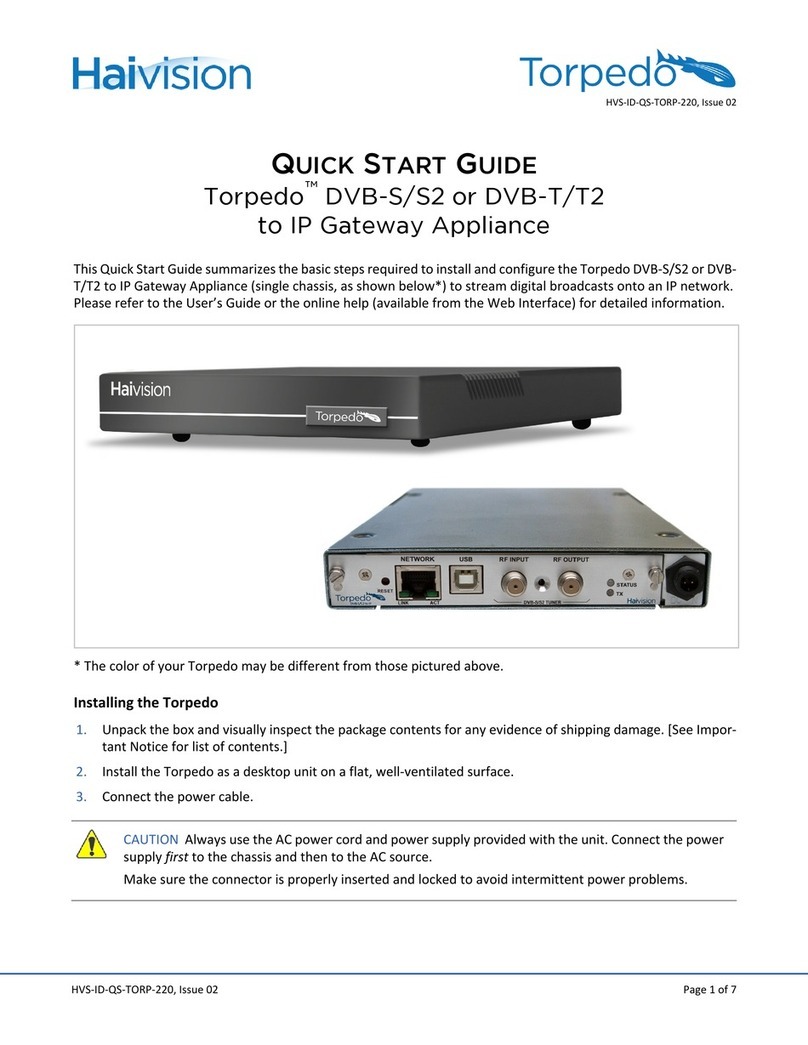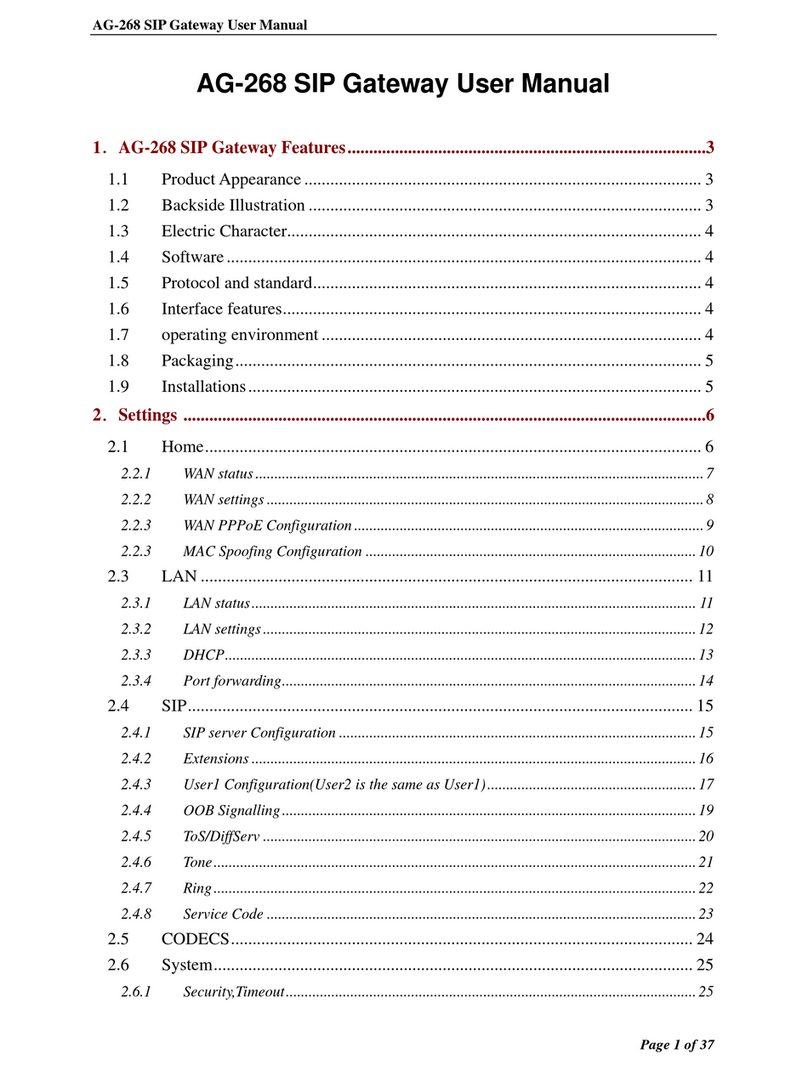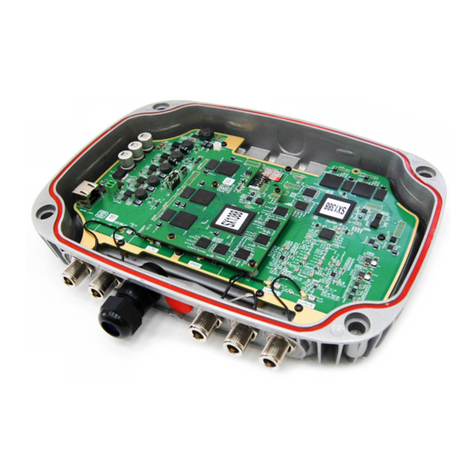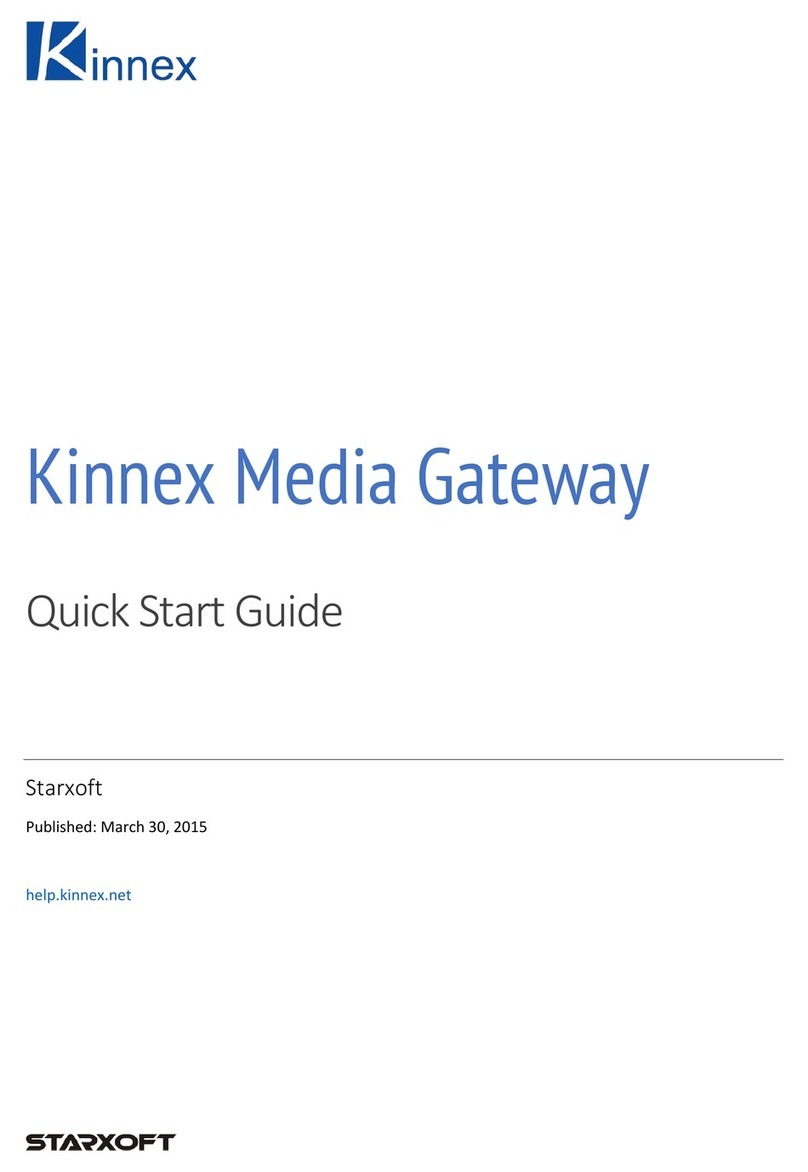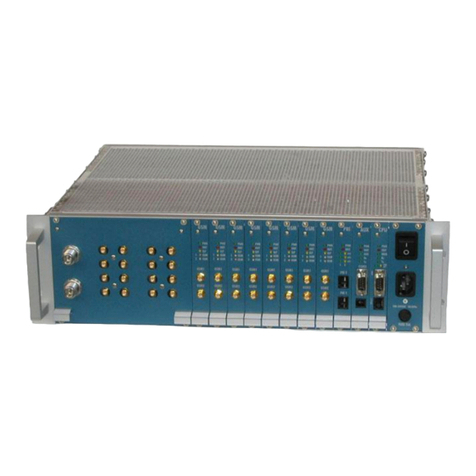
6/23
Technical data sheet: S000114125EN-3 Updated: 22/05/2023 Created: 01/02/2021
Cat. No(s): 0 026 65
KNX DALI Gateway DIN 16 groups
7.COMMUNICATION OBJECTS continued
7.2 Communication Object Descriptions (continued)
No Name Function DTP Type Length Flags
3 Device status General Non-DPT 3 byte CWT
This communication object is used for getting all current faults and
states of a DALI device in one comprehensive telegram. In order to
make a read request, a write should be made to object with read/
response bit is set.
Object consists of three bytes. Higher two bytes of telegram contains
all fault and state data and lowest byte contains DALI address of
subjected device and information of whether telegram is a status
request or sent status.
• Object will be activated if“Enable “Device status” object”
parameter in Feedback tab is selected as“yes”.
• Feedback will be sent only after a request if“transmit mode”
parameter in Feedback tab is selected as“after request”or only after
a value change if parameter is selected as“after change”. Feedback
will be sent on both occasions if the parameter is selected as“after
change or request”.
Bit numbers and data which they represented is explained below:
23 22 21 20 19 18 17 16 15 14 13 12 11 10 9 8 7 6 5 4 3 2 1 0
Byte Bit Field Description
1
Bit 0 - 5 DALI device address [0 - 63]
Bit 6 Reserved and should be '0'
Bit 7 Read or response flag: '1' = read, '0' = response
2
Bit 8 Device offline flag: '1' = offline, '0' = online
Bit 9 Device malfunction flag: '1' = failure '0' = no failure
Bit 10 Lamp failure flag: '1' = failure, '0' = no failure
Bit 11 Burn-in activate flag: '1' = active, '0' = passive
Bit 12 Functional test running flag: '1' = test running, '0' = test not present (ECK only)
Bit 13 Duration test running flag: '1' = test running, '0' = test not present (ECK only)
Bit 14 Battery duration failure flag: '1' = failure, '0' = no failure (ECK only)
Bit 15 Battery failure flag: '1' = failure, '0' = no failure (ECK only)
3
Bit 16 Emergency lamp failure flag: '1' = failure, '0' = no failure (ECK only)
Bit 17 Functional test failed flag: '1' = failure, '0' = no failure (ECK only)
Bit 18 Duration test failed flag: '1' = failure, '0' = no failure (ECK only)
Bit 19 Short circuit flag: '1' = failure, '0' = no failure (LED only)
Bit 20 Open circuit flag: '1' = failure, '0' = no failure (LED only)
Bit 21 Current protector active flag: '1' = failure, '0' = no failure (LED only)
Bit 22 Thermal shutdown flag: '1' = failure, '0' = no failure (LED only)
Bit 23 Reserved
4 Trigger emergency test General Non-DPT 1 byte CW
This object is used to start or stop, duration or functional test of a
selected ECK.
• Object will be activated if“Enable manual emergency test”
parameter in the Emergency tab is selected as “yes”.
Bit numbers and data which they represented is explained below:
76543210
Byte Bit Field Description
1
Bit 0 - 5 DALI device address [0…63]
Bit 6, 7
00b: Stop any currently running test
01b: Trigger functional test
10b: Trigger duration test
5 Auto emergency test start General 1.010 1 bit CRW
This object is used for activating or deactivating automatic self-test
procedures of DALI ECK devices. Furthermore, automatic emergency
test status can be read via this communication object.
• Value of the object will be“1” after an ETS download if the“Enable
auto emergency test after download”parameter in Emergency tab
is selected as “yes”. Value will be“0” if parameter is selected as“no”.
(value“1” = manual operation enable, value “0” = manual operation disable)
7.COMMUNICATION OBJECTS continued
7.2 Communication Object Descriptions (continued)
No Name Function DTP Type Length Flags
6 Coded status switch Coded Non-DPT 2 byte CWT
This object is used to get switch status of a DALI group or an individual
DALI ballast/driver. In order to make a read request, a write should be
made to object with read/response bit is set.
Object consists of two bytes. High byte of telegram contains switch
status and low byte contains DALI address of subjected device or
group number, information of whether telegram is a status request or
sent status and information of whether a device or a group is selected.
• Object will be activated if“Enable “Coded status switch” object”
parameter in Feedback tab is selected as“yes”.
• Feedback will be sent only after a request if“transmit mode”
parameter in Feedback tab is selected as“after request”or only after
a value change if parameter is selected as“after change”. Feedback
will be sent on both occasions if the parameter is selected as“after
change or request”.
Bit numbers and data which they represented is explained below:
15 14 13 12 11 10 9 8 7 6 5 4 3 2 1 0
Byte Bit Field Description
1
Bit 0 - 5 DALI device address [0 - 63] or DALI group number[0 - 15]
Bit 6 Individual device or group flag: '1' = device address, '0' = group number
Bit 7 Read or response flag: '1' = read, '0' = response
2Bit 8 Switch status: '1' = ON, '0' = OFF (DPT 1.001)
Bit 9 - 15 Reserved
7 Coded status brightness value Coded Non-DPT 2 byte CWT
This object is used to get brightness value of a DALI group or an
individual DALI ballast/driver. In order to make a read request, a write
should be made to object with read/response bit is set.
• Object consists of two bytes. High byte of telegram contains
brightness value and low byte contains DALI address of subjected
device or group number, information of whether telegram is a status
request or sent status and information of whether a device or a
group is selected.
• Object will be activated if“Enable “Coded status brightness value ”
object” parameter in Feedback tab is selected as“yes”.
• Feedback will be sent only after a request if“transmit mode”
parameter in Feedback tab is selected as“after request”or only after
a value change if parameter is selected as“after change”. Feedback
will be sent on both occasions if the parameter is selected as“after
change or request”.
Bit numbers and data which they represented is explained below:
15 14 13 12 11 10 9 8 7 6 5 4 3 2 1 0
Byte Bit Field Description
1
Bit 0 - 5 DALI device address [0 - 63] or DALI group number[0 - 15]
Bit 6 Individual device or group flag: '0' = device address, '1' = group number
Bit 7 Read or response flag: '1' = read, '0' = response
2 Bit 8 - 15 Brightness value [0 - 255] (DPT 5.001)


